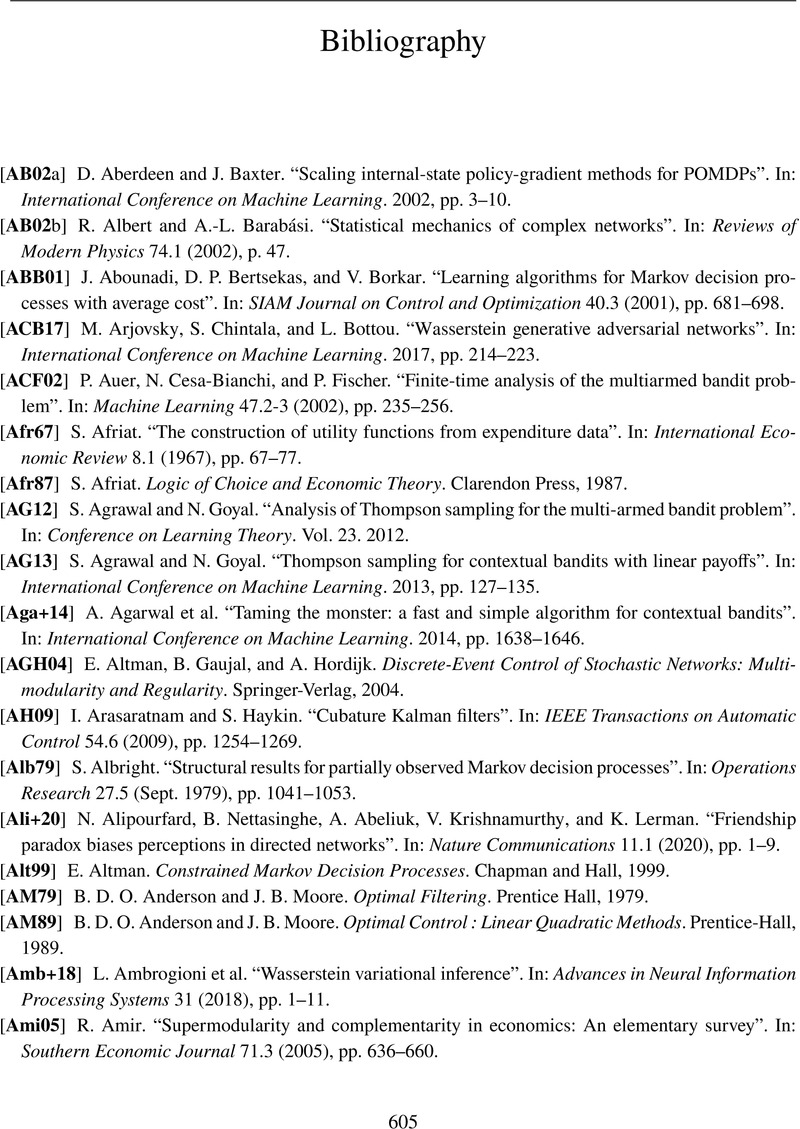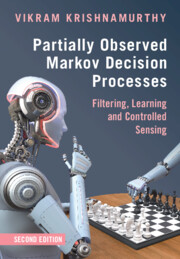Book contents
- Frontmatter
- Contents
- Preface to Revised Edition
- Notation
- 1 Introduction
- Part I Stochastic Models and Bayesian Inference
- Part II POMDPs. Models, Algorithms and Applications
- Part III POMDP Structural Results
- Part IV Stochastic Gradient Algorithms and Reinforcement Learning
- Part V Inverse Reinforcement Learning
- Appendix A Short Primer on Stochastic Simulation
- Appendix B Continuous-Time HMM Filters
- Appendix C Discrete-Time Martingales
- Appendix D Markov Processes
- Appendix E Some Limit Theorems in Statistics
- Appendix F Summary of POMDP Algorithms
- Bibliography
- Index
- References
Bibliography
Published online by Cambridge University Press: 16 May 2025
- Frontmatter
- Contents
- Preface to Revised Edition
- Notation
- 1 Introduction
- Part I Stochastic Models and Bayesian Inference
- Part II POMDPs. Models, Algorithms and Applications
- Part III POMDP Structural Results
- Part IV Stochastic Gradient Algorithms and Reinforcement Learning
- Part V Inverse Reinforcement Learning
- Appendix A Short Primer on Stochastic Simulation
- Appendix B Continuous-Time HMM Filters
- Appendix C Discrete-Time Martingales
- Appendix D Markov Processes
- Appendix E Some Limit Theorems in Statistics
- Appendix F Summary of POMDP Algorithms
- Bibliography
- Index
- References
Summary

Information
- Type
- Chapter
- Information
- Partially Observed Markov Decision ProcessesFiltering, Learning and Controlled Sensing, pp. 605 - 628Publisher: Cambridge University PressPrint publication year: 2025
